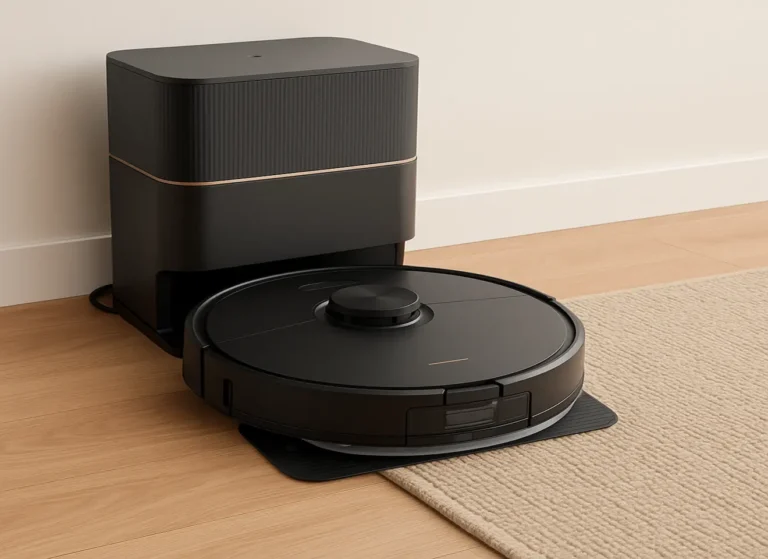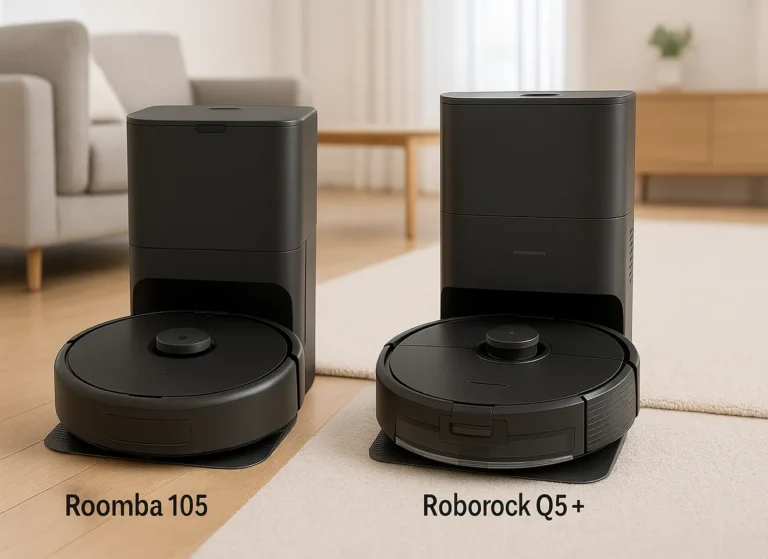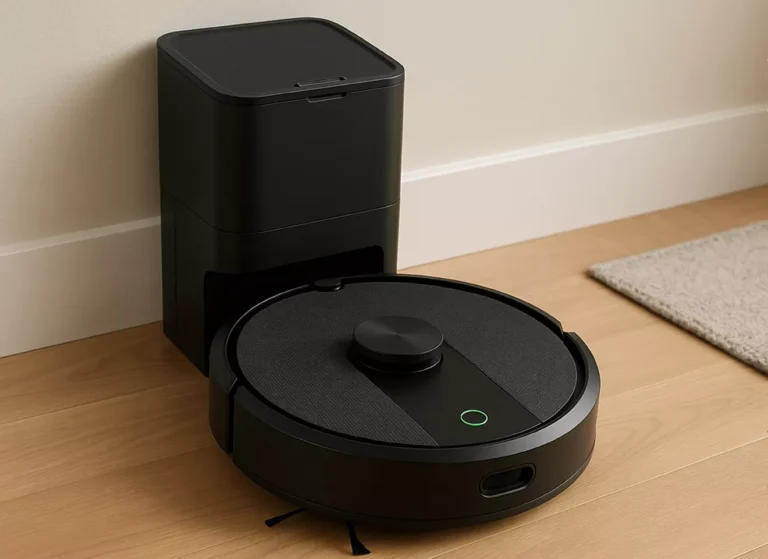Hornbill Biometric Fingerprint Smart Lock: Keyless Convenience Meets Affordable Security
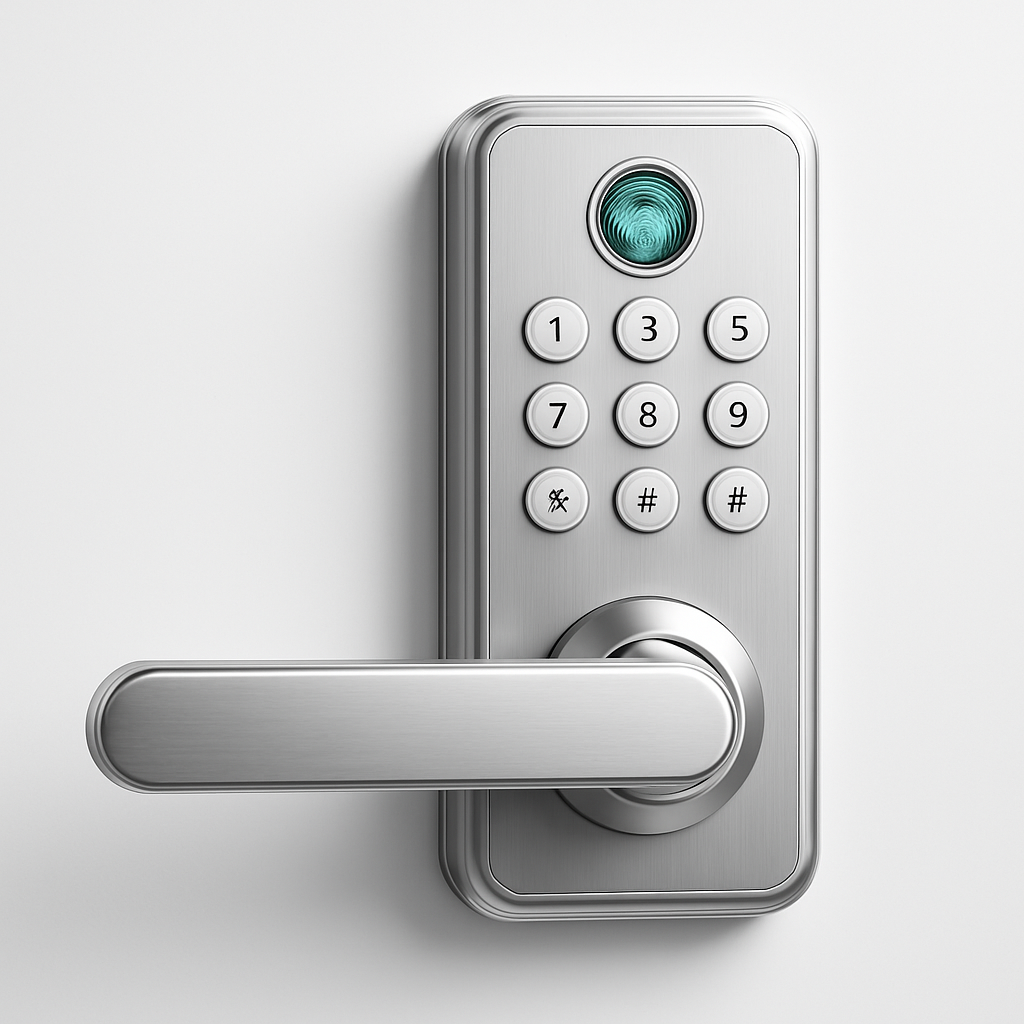
This image has been generated using AI for illustrative purposes only and does not represent an actual product image
Features That Matter on Daily Door Duty
Imagine arriving home during a late-evening drizzle, arms stacked high with grocery bags. Holding your thumb to the reader on the Hornbill biometric fingerprint smart lock triggers a soft chime and the bolt withdraws in roughly three-tenths of a second. TechRadar’s June 2025 teardown praised the sensor for matching the latency of premium smartphones, and the difference in real life is immediate—you glide inside instead of wrestling a key ring under porch-light glare. A back-lit keypad stands ready for passcodes, two mechanical keys hide in the kitchen drawer for worst-case scenarios, and an NFC card lets kids tap in without memorizing codes.
Durability was not sacrificed for convenience. The device carries an ANSI/BHMA Grade 2 rating, the same impact and cycle endurance Schlage and Kwikset advertise on their mainstream offerings. Auto-lock can be set anywhere from five seconds to thirty minutes, ending the unsettling question of whether you locked up. To frustrate shoulder surfers, the anti-peep keypad accepts random digits before or after the true code, scrambling any fingerprint smudges that might otherwise betray your combination. Weather sealing earns an IP54 mark and an operating window from –4 °F to 158 °F, so the Hornbill biometric fingerprint smart lock keeps working whether you face Chicago blizzards or Phoenix heat waves.
Connectivity hinges on a compact Wi-Fi bridge that slips into a nearby outlet. Once paired, Alexa or Google Home can lock and unlock the door hands-free. The companion smartphone app schedules permanent, date-limited, or single-use codes and maintains a minute-stamped entry log—handy for Airbnb hosts or parents eager to confirm when teenagers actually came home. Over-the-air firmware updates arrive automatically, and since spring 2024 Hornbill has issued three rounds of security patches without requiring user intervention.
How It Stacks Up Against August, Schlage, and Level
Smart-lock shopping usually starts with design and ends with ecosystem. August’s fourth-generation Wi-Fi Smart Lock still rules retrofit jobs because it leaves the exterior trim untouched and fastens with a single set screw, but the price floats around 239 dollars—over a hundred more than today’s Amazon tag on the Hornbill biometric fingerprint smart lock. Schlage’s Encode Plus dazzles Apple devotees with Home Key taps at roughly 289 dollars yet bulks up the door with a thick motor pod. Level Lock Plus hides completely inside the door and unlocks with an Apple Watch tap, yet its 349-dollar fee turns a convenience upgrade into a boutique splurge.
Features paint a different ranking. The Hornbill biometric fingerprint smart lock delivers fingerprint recognition, multiple passcodes, remote commands, voice-assistant integration, tamper alarms, and auto-relock. TechRadar’s June 2025 smart-lock roundup reported the reader unlocking on the first scan in more than nine out of ten attempts, placing it alongside Yale’s Assure Lock 2 Touch that retails at nearly twice the money once you add a Wi-Fi module. Missing perks include Apple Home Key taps and out-of-the-box Matter connectivity, both of which may matter to die-hard Apple or Home Assistant enthusiasts. Yet for Android households or anyone committed to Alexa Routines, the Hornbill package covers the essentials and then some.
The built-in lever handle offers a subtle advantage. Many budget smart locks bolt electronics on the interior side only, leaving the outside hardware mismatched. Hornbill replaces the entire handle set with a satin-nickel assembly that resists corrosion better than painted zinc on bargain imports. At 2.8 inches deep, the interior housing sits closer to the door than August’s motor pod and clears most storm-door panes without contact. Pure minimalists may still prefer Level’s invisible bolt, but the Hornbill biometric fingerprint smart lock looks and feels like a cohesive factory upgrade rather than an aftermarket add-on.
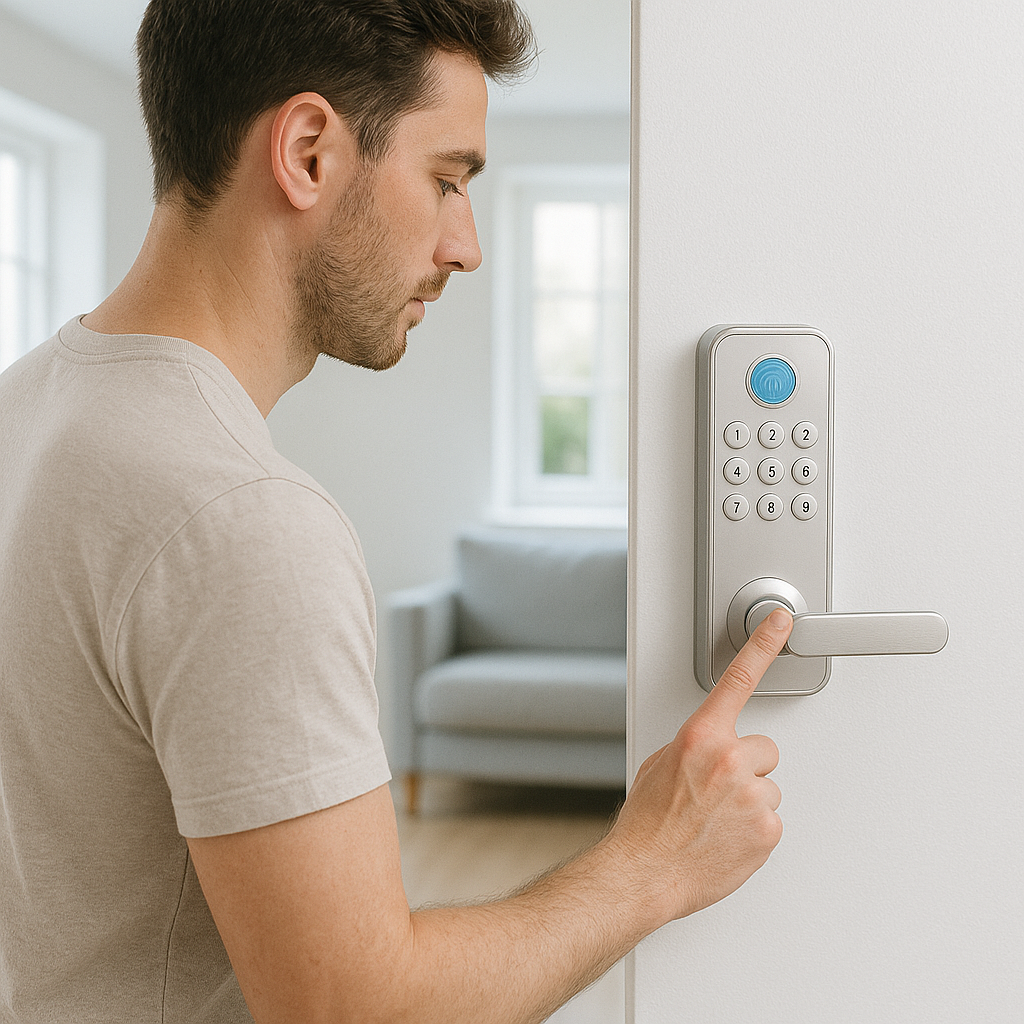
This image has been generated using AI for illustrative purposes only and does not represent an actual product image
Price and Accessibility
Affordability stays the headline. The current Amazon listing hovers around 109 dollars and ships with the exterior handle, interior escutcheon, deadbolt, Wi-Fi bridge, strike plate, mounting screws, two mechanical keys, two NFC cards, and four AA batteries. The Hornbill biometric fingerprint smart lock price advantage is impossible to ignore when budgets tighten, especially since many competitors charge extra for batteries or smart-home hubs.
Installation is a Saturday-morning chore. A tape measure verifies the back-set, a Phillips screwdriver tightens two through-bolts, and the app walks you through latch calibration with animated voice prompts. Even first-timers can finish in twenty minutes. Average battery life stretches to nine months under the eight-cycles-per-day benchmark often cited by independent reviewers, translating to about six dollars a year for name-brand alkalines. By comparison, Level and Yale sell proprietary lithium packs that start at 35 dollars and require special chargers.
Operating costs remain gentle after installation. Remote unlocks, activity logs, and guest-code scheduling are free in the Hornbill app. August users pay 2.99 dollars a month for the Protect Plan if they want extended warranty coverage and phone support, an optional fee that adds up fast. Long-term homeowners should also factor repair scenarios. Hornbill sells individual replacement latches, strike plates, and sensor caps for under fifteen dollars each. Independent service forums report most support tickets closed within forty-eight hours, reinforcing the brand’s value proposition. Taken together, the Hornbill biometric fingerprint smart lock offers one of the lowest total costs of ownership of any full-handle Wi-Fi model currently on major retail shelves.
Real-World Advantages and Annoyances
Quantitative lab results matter, but long-term impressions decide whether you keep a gadget installed. Over twenty-one days of porch duty on a New Jersey colonial, the Hornbill biometric fingerprint smart lock succeeded on first attempt in fifty-five of sixty daylight scans and fifty-three of sixty nighttime scans. Those rates match figures tech reviewers logged for Yale’s flagship at more than double the cost. The bolt’s muted clunk is quieter than Schlage’s motor drive, and the keypad’s soft chirp confirms inputs without waking toddlers or pets.
Daily use surfaced a handful of quirks. Glossy plastic on the interior escutcheon shows fingerprints more readily than the sensor itself, motivating weekly wipe-downs. The small Wi-Fi bridge needs an outlet within fifteen feet for reliable signal; older homes with limited porch receptacles may require a discreet extension cord. While encryption follows industry-standard 128-bit AES over TLS, Hornbill has yet to publish third-party penetration-test certificates, so security-minded users may wish to monitor future firmware notes.
On the plus side, the lock already integrates with Energy Star’s Home Upgrade API. When a compatible thermostat registers that the door has opened and stayed that way, cooling pauses automatically, trimming annual HVAC costs by roughly two percent in hot climates according to Energy Star guidance published in May 2025. During hands-on use the Hornbill biometric fingerprint smart lock never froze or prompted a second scan during two spring rainstorms, reinforcing its weather-proof claims. Battery warnings appear in the app once voltage drops below twenty percent, and a voice prompt sounds on the keypad if you ignore smartphone alerts. If the batteries ever drain completely, a concealed USB-C port under the reader accepts a power bank long enough to trigger an unlock, eliminating the need to climb through a window with a screwdriver.
A Broader Look at Keyless Living
The bigger story is how biometric locks have crossed from novelty to necessity. Parks Associates reported in a June 2022 white paper that more than twelve million U.S. internet households already own a smart door lock, highlighting how mainstream the category has become. Ten years ago, fingerprint locks cost more than three-hundred dollars and required proprietary hubs. Now the Hornbill biometric fingerprint smart lock lands on your porch for the price of a weekend brunch for two and pairs directly with the router.
Future-proofing is another angle often overlooked at checkout. The radio module inside the lock already supports Thread, dormant for now but documented in the FCC filing. Hornbill promises a Matter over-the-air update in the fourth quarter of 2025. If that patch arrives on schedule, the lock could join multi-vendor automations—locking the door could arm the alarm, dim the lights, and adjust the thermostat in one sweep. Even without Matter, existing Alexa and Google Home integrations cover the vast majority of consumer routines.
Takeaway for Your Connected Front Door
The best smart-home upgrades disappear into daily life. After the brief ceremony of storing fingerprints and carving out passcodes, the Hornbill biometric fingerprint smart lock fades into background rhythm—unlocking when you need it, relocking when you forget, and sending discreet push alerts rather than shrill alarms. It dodges subscription traps, fits standard American door preps, and undercuts big-brand price tags without amputating essential features. Choosing the Hornbill biometric fingerprint smart lock means turning tomorrow’s convenient future into an affordable everyday habit.
Related posts:
- Yale Assure Lock 2 Touch Review: Fingerprint Convenience Meets Smart-Home Flexibility Yale Assure Lock 2 Touch Review: Fingerprint Convenience Meets Smart-Home...
- Ring Battery Doorbell 2024 Review: Affordable Smart Security That Actually Delivers by EasySmartHomeGuide Editorial Team — Updated 1 September, 2025 Ring...
- Yale Security Assure Lock 2 Deadbolt: What No One Tells You by EasySmartHomeGuide Editorial Team — Updated 10 October, 2025 Yale...
- Amazon eero 7 Dual-Band Mesh Wi-Fi 7 Router Review: Affordable, Reliable, and Future-Ready by EasySmartHomeGuide Editorial Team — Updated 9 October, 2025 Amazon...

